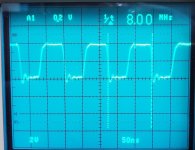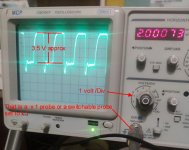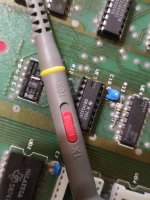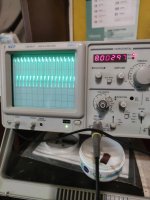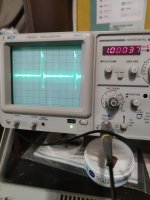Hugo Holden
Veteran Member
These are some things you could do while waiting for a new 74191:
Possibly the 74191 that you got that is reported bad is ok, and the tester is simply reporting it bad.
Have you checked both the 74191's (the original and the new suspect one) in the tester ?
and have you tried the new one you have in the PET and checked its Pin 3 output on the scope ?
Also, your scope probe looks really badly compensated with far too much overshoot. Can you connect the scope probe onto the probe test point on the scope's front panel, lower left, and take a photo of the square wave that you see there ?
(the probe is behaving as though it has a very high input capacitance, can you state the brand and model number of the probe, I will look it up. I will also conduct an experiment on my PET to see how much added capacitance it takes to upset G5 pin 3. PS...do you have a capacitance meter ?)
Can you advise where you have clipped the scope probe earth clip ?
Possibly the 74191 that you got that is reported bad is ok, and the tester is simply reporting it bad.
Have you checked both the 74191's (the original and the new suspect one) in the tester ?
and have you tried the new one you have in the PET and checked its Pin 3 output on the scope ?
Also, your scope probe looks really badly compensated with far too much overshoot. Can you connect the scope probe onto the probe test point on the scope's front panel, lower left, and take a photo of the square wave that you see there ?
(the probe is behaving as though it has a very high input capacitance, can you state the brand and model number of the probe, I will look it up. I will also conduct an experiment on my PET to see how much added capacitance it takes to upset G5 pin 3. PS...do you have a capacitance meter ?)
Can you advise where you have clipped the scope probe earth clip ?
Last edited:

